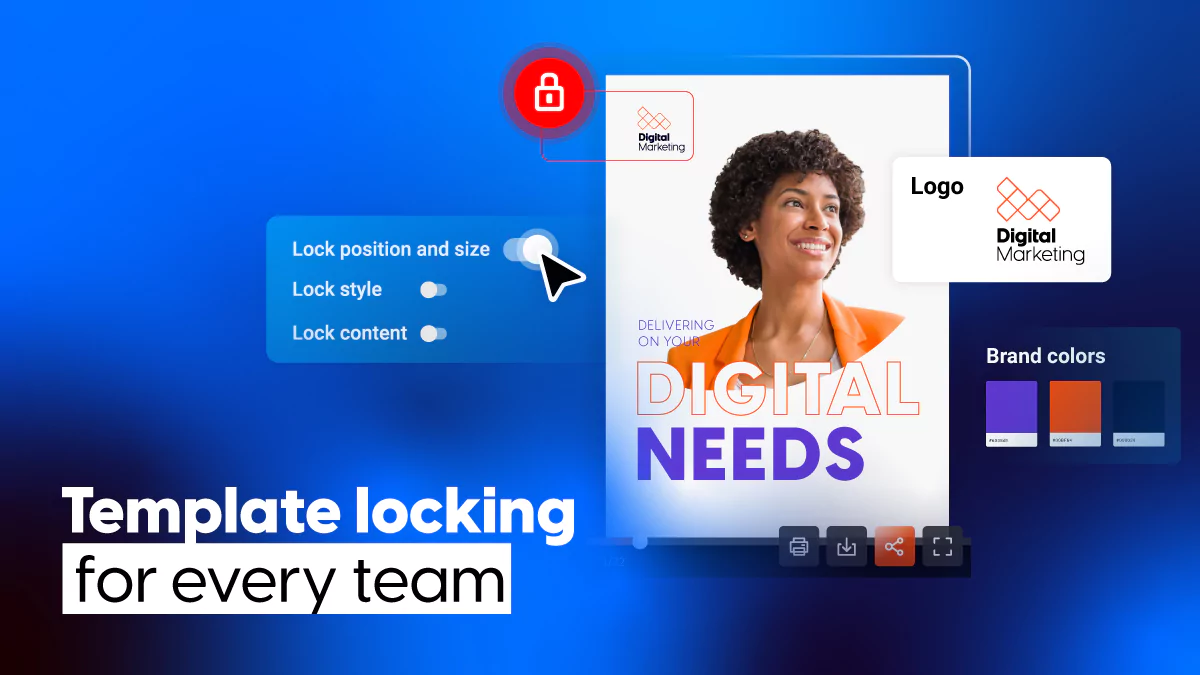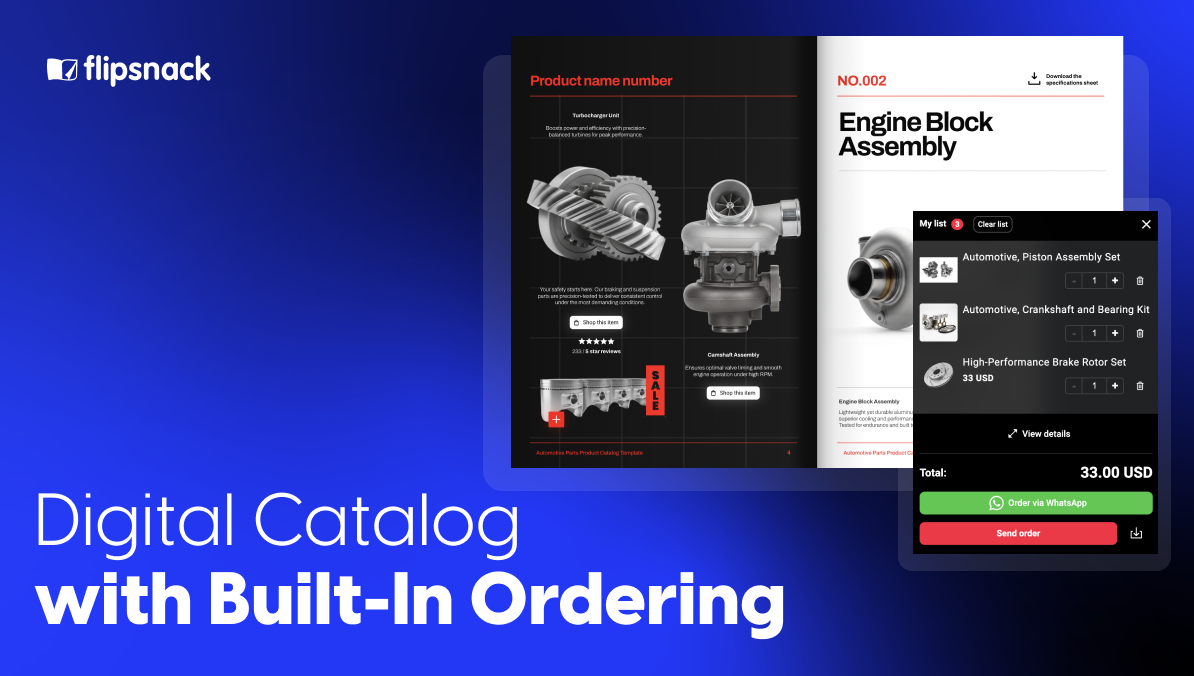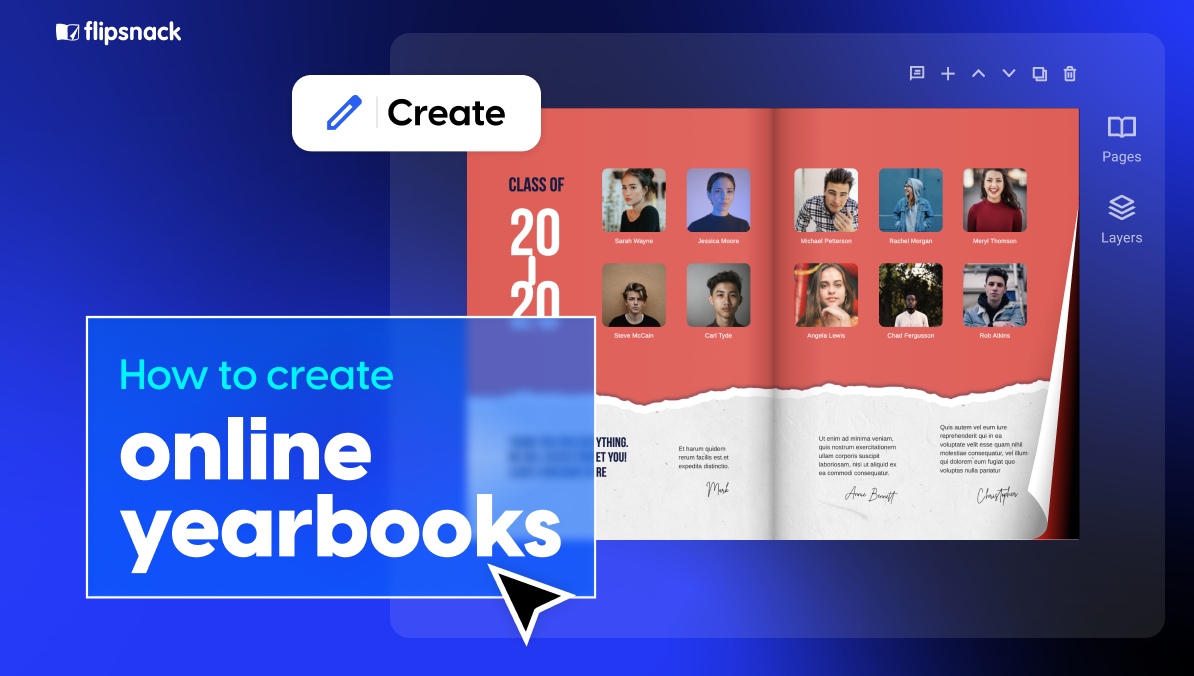How Template Locking Transforms Team Design Workflows
The brand consistency nightmare every design team knows
Picture this: It’s Monday morning, and your inbox is flooded with “urgent” design requests from three different departments. Sales needs a product brochure by noon, HR wants an updated onboarding presentation, and the regional office in Chicago is asking for help with their quarterly newsletter. Each request comes with the same plea: “Just make it look on-brand.”
By Wednesday, you’re drowning in revision requests. The sales brochure uses the wrong shade of blue, HR somehow managed to stretch your logo beyond recognition, and Chicago’s newsletter looks like it belongs to a completely different company. Sound familiar?
This scenario plays out in organizations everywhere—teams need design materials quickly, but they lack the expertise to maintain brand consistency. What ends up happening is that design teams become bottlenecks, non-designers feel frustrated and dependent, and brand standards slowly erode across every piece of content your company produces.
What if there was a way to give your teams the creative freedom they need while keeping your brand elements bulletproof? Template locking transforms this common workflow nightmare into a streamlined process where everyone wins—your brand stays consistent, your team moves faster, and your designers can focus on what they do best instead of playing brand police.

The challenge: balancing brand control with team autonomy
Every growing organization faces the same dilemma: how do you maintain pristine brand standards while enabling teams to create content at the speed of business? Traditional approaches force you to choose between two equally problematic extremes.
The “approval bottleneck” model
On one side, you have the “everything must be approved” approach where design teams become gatekeepers for every piece of content. This creates several cascading problems:
- Design teams get overwhelmed with production requests instead of strategic work
- Projects get delayed waiting for design approval and revisions
- Urgent deadlines force rushed approvals, leading to brand inconsistencies anyway
- Non-design teams feel frustrated and dependent on others for simple updates
The “creative free-for-all” approach
On the other side, there’s complete freedom with brand assets. The predictable results include:
- Logo disasters – Stretched, recolored, or poorly positioned logos
- Color drift – Brand colors shift toward personal preferences
- Typography chaos – Font choices that ignore brand guidelines
- Layout inconsistency – Each team interprets spacing and hierarchy differently
The messy middle ground
Most organizations end up with a patchwork solution that includes shared file folders, lengthy PDF brand guidelines, and informal “just ask marketing” protocols. This creates its own set of headaches:
- Duplicated work across departments
- Inconsistent interpretations of the same brand rules
- Constant correction cycles that waste time for everyone
- Version control nightmares with outdated templates
The real issue isn’t that teams don’t want to follow brand guidelines—it’s that traditional tools make it nearly impossible to enforce them without creating friction.
What teams actually need is a solution that makes doing the right thing easier than doing the wrong thing.
Template locking is exactly what it sounds like: the ability to protect specific design elements in a template while leaving others editable. Think of it as creating “untouchable zones” for your most important brand elements.
Here’s how it works in practice. You create a template with your logo, brand colors, and typography locked in place. When team members use that template, they can add their own text, swap in relevant images, and customize content areas—but they literally cannot move, delete, or modify the protected brand elements.
The key difference: Traditional templates rely on trust and training. Locked templates make brand compliance automatic.
Instead of hoping everyone follows your brand guidelines correctly, you build the guidelines directly into the template structure. Your brand elements become as permanent as the foundation of a house—everything else can be customized, but the core stays solid.
The bottom-line benefits of template locking
When template locking works correctly, the improvements ripple through your entire organization:
Time savings compound quickly. Teams typically waste over 21 hours per week searching for documents and project information. That’s more than half their working time. Template locking eliminates this search time entirely while reducing asset approval turnaround time.
Production costs drop significantly. Organizations implementing centralized asset management see a 30% reduction in creative production costs by eliminating recreated materials. Businesses report a 40% cost savings through optimized asset reuse when teams can confidently access and modify pre-approved branded templates.
Campaign speed accelerates dramatically. Companies see 25% faster time-to-market for campaigns when teams can bypass the traditional design-review-revise cycle and jump straight to content creation within locked brand frameworks.
Quality becomes the default. Instead of hoping people follow brand guidelines, compliance becomes automatic. Every piece of content maintains your brand standards without requiring design expertise or constant oversight.
Scaling becomes sustainable. As your organization grows, template locking prevents the exponential increase in brand management complexity. Whether you’re adding new team members, expanding to new markets, or launching additional product lines, your brand consistency scales with you.
How to share branded templates with team members
Structured team collaboration through workspaces
Flipsnack organizes collaboration around dedicated workspaces that function as secure, project-specific environments. Each workspace houses your organization’s operational assets: team members, published content, brand settings, payment information, and security configurations. In the end, creating a centralized hub where teams can work without mixing content or compromising control.
Multiple workspaces keep everything organized:
- Marketing agencies can maintain separate workspaces for each major client
- Large corporations can create dedicated environments for different product lines or regional offices
- Organizations can operate multiple workspaces simultaneously, enabling efficient management of various departments or client projects
Role-based access gives every team member the right permissions:
- Admins have full control over settings, team management, and document access
- Editors can collaborate on content without administrative privileges
- Viewers get read-only access to prevent unauthorized changes
- Contributors can create content but need approval before publishing
This structured approach becomes particularly valuable for large organizations where different teams—global marketing, sales, HR, or product development—require varying access levels, ensuring clarity and accountability throughout the content creation process.
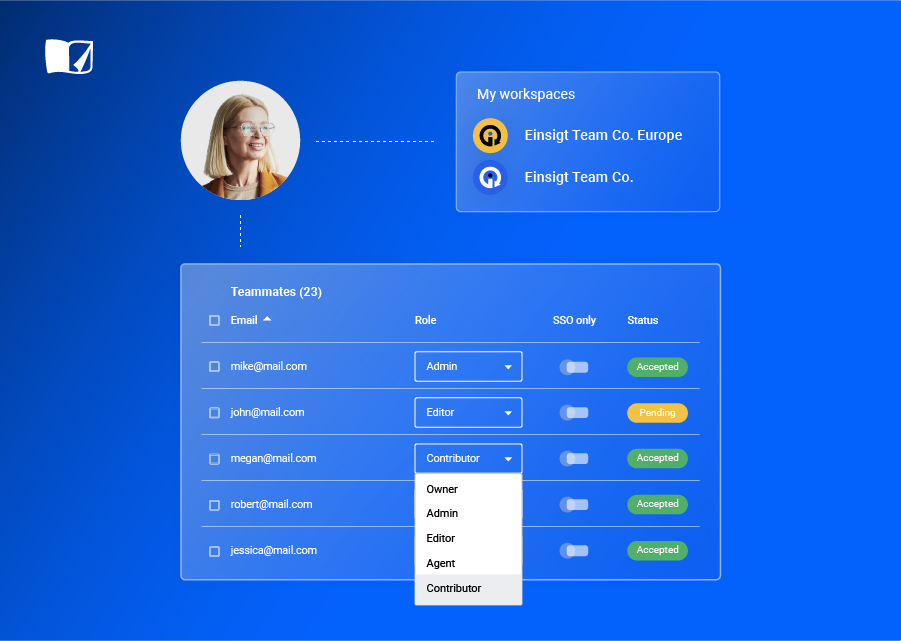
The sharing process
Going back to sharing branded templates with your team, it’s important to note that Flipsnack organizes shared templates into two strategic categories that keep everything organized:
Team section: Houses workspace-specific designs for focused team use
Organization section: Contains approved shared designs accessible across workspaces
Sharing templates with your team takes just a few clicks:
- Navigate to Templates in your main dashboard
- Click the three dots menu next to your chosen template
- Select Share template
- Choose your target workspace(s) from the popup
- Click Save changes
Once shared, you’ll notice a new icon appears below each template’s information, indicating it’s been shared with other workspaces. Team members receiving the template will see it in their Organization section, and hovering over the icon shows exactly which workspace sent it.
Important considerations
Custom fonts require coordination. If your locked template uses custom team fonts, the receiving workspace must also have those fonts uploaded. Otherwise, a standard font will automatically replace it. This doesn’t affect custom colors or images—only typography.
Recipients can use, not edit. When team members receive a shared template, they’ll only see a “Use template” option. They won’t be able to modify the original template itself, ensuring your master version stays intact.
Selective sharing is possible. You can now choose specific workspaces to share with, rather than automatically sending to all connected workspaces. Need to change recipients later? Simply adjust the sharing settings from your Team templates section.
This organized approach ensures your locked templates reach the right teams while maintaining clear oversight of who has access to what branded materials.
How different departments can use template locking
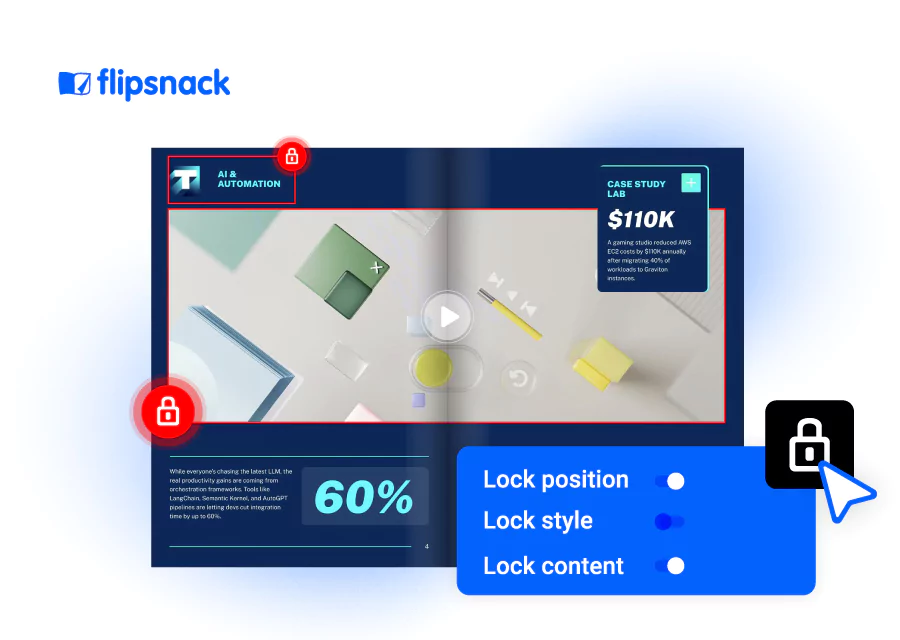
Marketing agencies: scaling client work
The scenario: A digital marketing agency manages 15 different client brands, each with distinct visual identities. Junior designers and account coordinators need to create social posts, email headers, and campaign assets quickly—but every piece must perfectly reflect each client’s brand standards.
The solution: Senior designers create locked templates for each client with logos, color palettes, and typography hierarchy protected. Team members can focus on crafting compelling content and selecting relevant imagery while the brand foundation remains untouchable.
The payoff: Campaign turnaround time drops from days to hours, client revisions focus on content rather than brand corrections, and junior staff can confidently create materials without constant oversight.
Corporate teams: global consistency, local relevance
The scenario: A multinational software company needs regional offices to create localized sales materials, event promotions, and recruitment content. Each region knows their market best, but corporate branding must remain consistent across all materials.
The solution: Corporate marketing creates master templates with locked brand elements that regional teams can customize with local languages, market-specific imagery, and relevant product information.
The payoff: Regional teams move faster on local campaigns while corporations maintain complete brand control across 20+ markets.
Franchise operations: brand protection at scale
The scenario: A restaurant franchise with 200+ locations needs individual franchisees to create local promotions, hiring flyers, and community event materials—without accidentally damaging the carefully built brand equity.
The solution: Corporate provides locked templates where franchise owners can update addresses, phone numbers, local offers, and seasonal promotions, but core brand elements remain protected.
The payoff: Franchisees feel empowered to market locally while corporate eliminates brand compliance headaches across hundreds of locations.
Publishing teams: streamlined approval workflows
The scenario: A content marketing team produces weekly reports, case studies, and whitepapers. The approval process typically involves multiple rounds of design feedback before content can be published.
The solution: Design leads create locked frameworks with established layouts, typography systems, and brand elements, allowing content creators to focus purely on writing and information hierarchy.
The payoff: Design approval cycles shrink from weeks to days, and designers can focus on high-impact creative work instead of repetitive layout corrections.
Getting started with branded templates
Ready to transform how your team creates branded content? Sharing branded locked templates is a feature available on Flipsnack’s Enterprise plan.

Start by identifying your biggest brand consistency pain points—those materials that always seem to need “just one more revision” before they’re ready. These are perfect candidates for your first locked templates.
Want to see exactly how the locking feature works? Check out our step-by-step guide or explore template sharing workflows for teams in our collaboration documentation.
